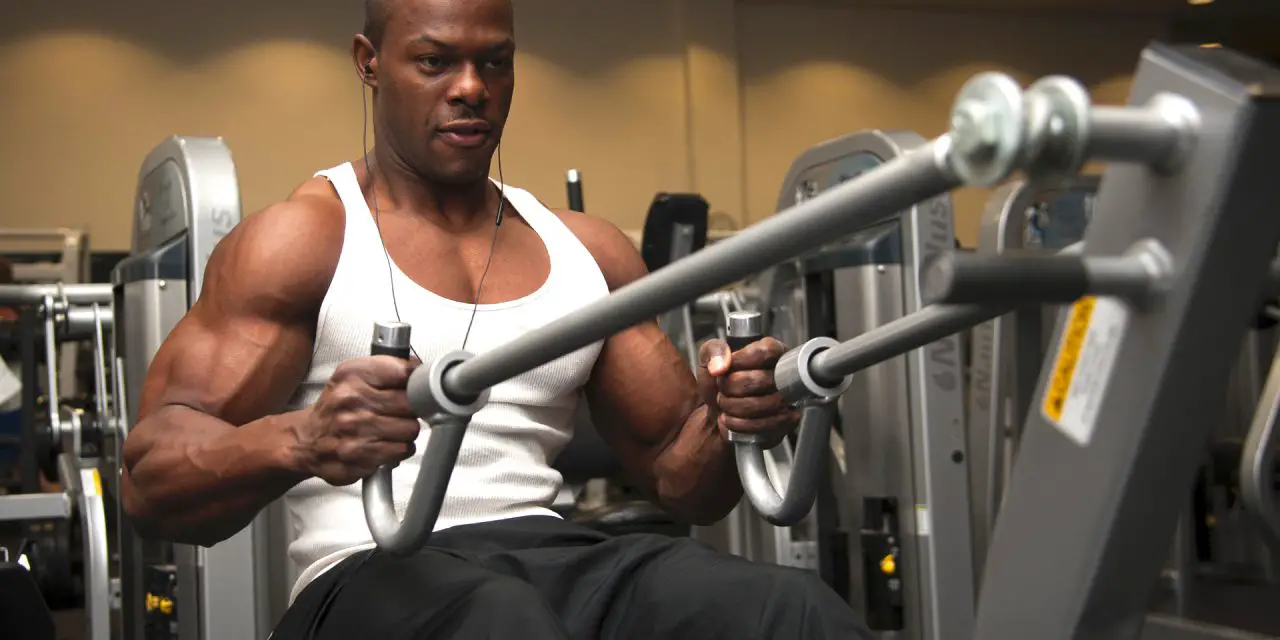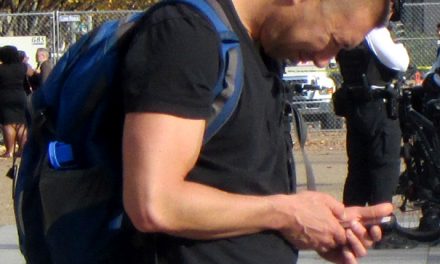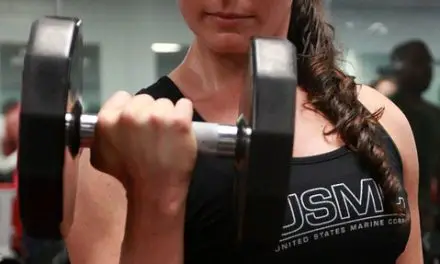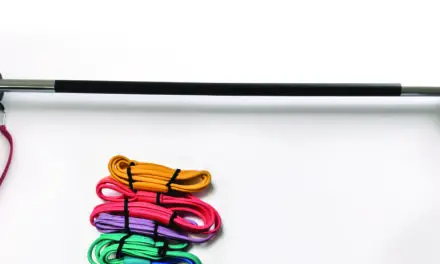Posture correctors have come a long way from the early days of girdles to the current array of wearable devices. These devices are said to help with spinal alignment while also teaching you what “proper” posture feels like.
The question of whether posture correctors work may be somewhat related to the goal of the wearer. If the idea is to get you to avoid slouching, sure, they do that.
But if the goal is to fix posture as a means to address back pain, keep looking.
Despite the lack of evidence of long-term changes, these garments and devices are wildly popular, thanks to social media influencers and less-informed health and fitness professionals. Our current reliance on smartphones, tablets, and computers, face-to-face communication, and entertainment has created a ton of opportunities for companies to market products that promise to fix the slouching posture.
“Public health perspectives are outweighed by the potential of selling products,” said Dr. Thorvaldur S. Palsson, an Associate Professor in the Department of Health Science and Technology at Aalborg University in Denmark.
Back in 2019, he and his colleagues have published a systematic review of six qualified studies and found no good quality evidence that posture correctors have a role in pain management. In fact, they pointed that the studies are based on pain-free subjects, so nobody really knows for sure how well the products work for people with low back pain.
“There is no good quality evidence to support recommendation of posture-correcting shirts as a management strategy for musculoskeletal pain,” Palsson et al. concluded. “Promotion of this product may reinforce the inaccurate and unhelpful message that poor posture leads to pain.
“Until then, the use of posture-correcting shirts for musculoskeletal pain is not supported by current evidence.”
Palsson compared posture correctors to what we often see in products that promote weight loss. These people have often tried everything to lose weight before turning to quick fixes. Those looking for help with back pain are no different.
“These people often had failed attempts at reducing their pain with and without the help of healthcare professionals,” he said. “Posture correctors are considered the last resort. It is fully understandable that people in pain will do a lot to get better.”
Posture correctors research
Posture correctors seem to be much ado about nothing. Researchers at the University of Alabama studied the effect of posture shirts on forward head posture and forward shoulder angle among college students.
Posture assessments were performed while wearing the corrective shirt, a sham shirt, and no shirt (men) or tank-top or bra (women).
The researchers found that posture did not change when participants wore the corrective shirt. Interestingly, the study found that forward shoulder angle was altered when wearing the sham shirt, which seemed to be related to the shirt’s design.
Participants reported that the sham shirts were much more restrictive than the corrective shirts, which may explain the posture changes.
The most promising research for the use of a posture correcting brace is a single study performed using a compression shirt with added tension straps, as opposed to the neural bands most of the shirts use.
Thirty-eight athletes with forward head and rounded shoulders were randomly assigned to either a group that wears a compression shirt with no strap or a group that wears a compression shirt with a tension strap.
The study found a decreased forward shoulder angle in the group that wore the shirt with tension straps, which may suggest that some of the other garments just didn’t reach the necessary threshold for tissue changes.
Although the evidence is scarce in patients with pain, there may be some support for the use of posture correcting garments in a healthy population.
Researchers from Auburn University in Alabama collected movement data in 40 active women while wearing a posture correcting shirt and a generic performance shirt.
The position of the shoulder blades improved in those who wore the posture-correcting garment compared to the performance shirt, suggesting the shirts induce immediate changes to posture with the garment. Specifically, those wearing posture shirts carried their scapula in more retraction and posterior tilt when standing.
Such changes have the potential to change the length-tension relationships of muscles, which could improve performance. More research is required to know the full implications of these changes.

Dr. Thorvaldur S. Palsson compares posture correctors to weight loss products. People have tried everything to lose weight before turning to quick fixes. Those looking for help with back pain are no different.
Photo courtesy of Dr. Thorvaldur Skuli Palsson.
Can improving your posture really reduce back pain?
“A human being’s posture is not akin to the alignment of an automobile and should never be seen as such.” ~ Dr. John Snyder
To say the research doesn’t support the need to fix posture is an understatement. A systematic review on spinal curves and pain found no correlation between the degree of the spinal curves that deviate from a “normal” curvature and pain.
This suggests that we may need to re-think where we focus our attention when it comes to neck and back pain.
A team of Polish researchers, led by Dr. Anita Król from the Jagiellonian University Medical College, studied the relationship between pelvic tilt and a host of factors, like age, BMI, abdominal muscle activation, and spinal postures
Among the 60 participants, the researchers found that as the pelvic tilt increased, so did lumbar lordosis in those with and without back pain.
What’s interesting is that those without back pain had higher than average anterior pelvic tilt values than those with back pain.
These findings contradict the assumptions of lower cross syndrome, which suggests tight hip flexors and lower spine muscles and weak abdominal and butt muscles create too much anterior pelvic tilt and lordosis of the spine.
These postural deviations are thought to be the source of back pain. Instead, the research suggests that anterior pelvic tilt or lordosis does not increase the risk of pain.
Slouching has long been a form of rebellion. As people transitioned from the stiff, corseted, formal clothes of the 19th century to the loose, free hanging, anything-goes dresses of the flappers, even their furniture went from stiff and stately to comfy and less restrictive.
Gone were the hard-backed chairs that forced upright posture. They were replaced by soft, springy sofas, which brought the slouched, slumped posture. Consumerism and relaxation prevailed, as did slouching and the fight to avoid a hunchback posture.
Although video games, cell phones, and backpacks are blamed for back pain among kids and teenagers, a study on the effects of “text neck” looked at 150 young adults and found no association between neck posture and pain.
Another systematic review evaluated eight studies that looked at back pain among 10- to 18-year-olds. Although mid-back pain is mentioned in some of the research, it is poorly defined. Researchers were able to identify more lordosis when sitting, and more forward head and sway back posture in standing, as two factors associated with neck pain.
It was hard for them to compare the studies because of the lack of a consistent definition for neck or mid-back pain. Also, the included studies had too much variation in how they measure and set up the experiment, which makes the outcomes unclear.
“These people often had failed attempts at reducing their pain with and without the help of healthcare professionals. Posture correctors are considered the last resort. It is fully understandable that people in pain will do a lot to get better.” ~ Dr. Thorvaldur S. Palsson
So do you need to fix your posture?
Just like the old adage, Dr. Palsson cautioned consumers looking for posture correctors to ask, “If it sounds too good to be true, then it probably is.” There’s no quick fix for back pain, and there certainly seems to be no reason to emphasize postural correction in its treatment.
Not quite convinced? In the past decade, four more systematic reviews have been published that do not support a relationship between posture and pain.
1. Roffey et al., found strong evidence from six high-quality studies to determine no association between awkward postures (kneeling or squatting, awkward back positions, or uncomfortable work postures) and low back pain was present.
2. Another eight high-quality studies used in the review by Ribeiro and colleagues in 2012 showed a lack of a dose-response relationship between posture and pain. The dose-response relationship describes the way one variable affects another.
In this context, the dose is the amount of time spent in a particular posture and the response is pain or no pain.
3. Ten studies of mixed quality suggest thoracic kyphosis is an unlikely contributor to shoulder pain, but there’s some evidence that improving kyphosis means better shoulder range of motion for those with or without pain. This suggests that efforts to improve posture to maintain healthy shoulders may be worthwhile.
4. In a group of teenagers with neck pain and headaches, Richards et al., found no significant difference in the likelihood of developing neck pain or headaches based on sitting posture.

Whether it’s cardio or strength training, exercise is an economic way to manage low back pain. Photo: Airman First Class John D. Partlow.
The management of low back pain is complex, but we have to start somewhere. These clinical practice guidelines from the European Spine Journal make for a great jumpstart:
- Avoid bed rest (as I always say, “The worst thing you can do is nothing.”).
- Maintain normal activities. Get up. Shower. Go to work. Exercise. The more normal your routine, the faster you recover.
- Be reassured that back pain is often not serious. Most often, back pain results from doing too much or too often rather than a most sinister cause.
- Find a good physical therapist or massage therapist. Seek out a clinic and therapist that align with your needs and goals. The therapist should be someone whom you can trust and be a guide to help you get back to your pain-free life.
- Exercise. Simply put, exercise is medicine. Do enough to generate a light sweat to increase blood flow, improve mood, and decrease pain. A 5- to 10-minute walk around the block is a great place to start.
Posture doesn’t even rank in the top 10 list in the guidelines. If it were that important, you’d think it would rank up there.
Dr. John Snyder, who is a physical therapist at Active Physical Therapy in Columbus, Ohio, suggested alternatives to worrying about your posture.
“Based on the available literature and biological plausibility, postural assessment and interventions do not even come close to the top ten [in management of pain],” he said. “We need to [educate] our patients that their body is resilient and adaptable. A human being’s posture is not akin to the alignment of an automobile and should never be seen as such.”
It’s unlikely to be worth the time or money to invest in a posture corrector or thinking too much about posture. Instead, relatively low-tech may be the way to go. Finding reasons to get up and move may be the quickest, easiest way to change your posture.
If you work in an office setting, use the printer that is further away so that you have to get up and move every so often or use a smaller water bottle so you will need refills more often.
“One could use a reminder in the mail program on the computer or on the phone,” Palsson said. “If the intention is to get the person to change posture when working at an office desk, it is quite possible to use some simple and cheap solutions.”

Penny Goldberg, DPT, ATC
Penny Goldberg, DPT, ATC earned her doctorate in Physical Therapy from the University of Saint Augustine and completed a credentialed sports residency at the University of Florida. She is a Board Certified Clinical Specialist in Sports Physical Therapy.
Penny holds a B.S. in Kinesiology and a M.A. in Physical Education from San Diego State University. She has served as an Athletic Trainer at USD, CSUN, and Butler University.
She has presented on Kinesiophobia and differential diagnosis in complicated cases. Penny has published on returning to sports after ACL reconstruction and fear of movement and re-injury.
Outside of the clinic, Penny enjoys traveling, good cooking with great wine, concerts, working out and playing with her dogs.





